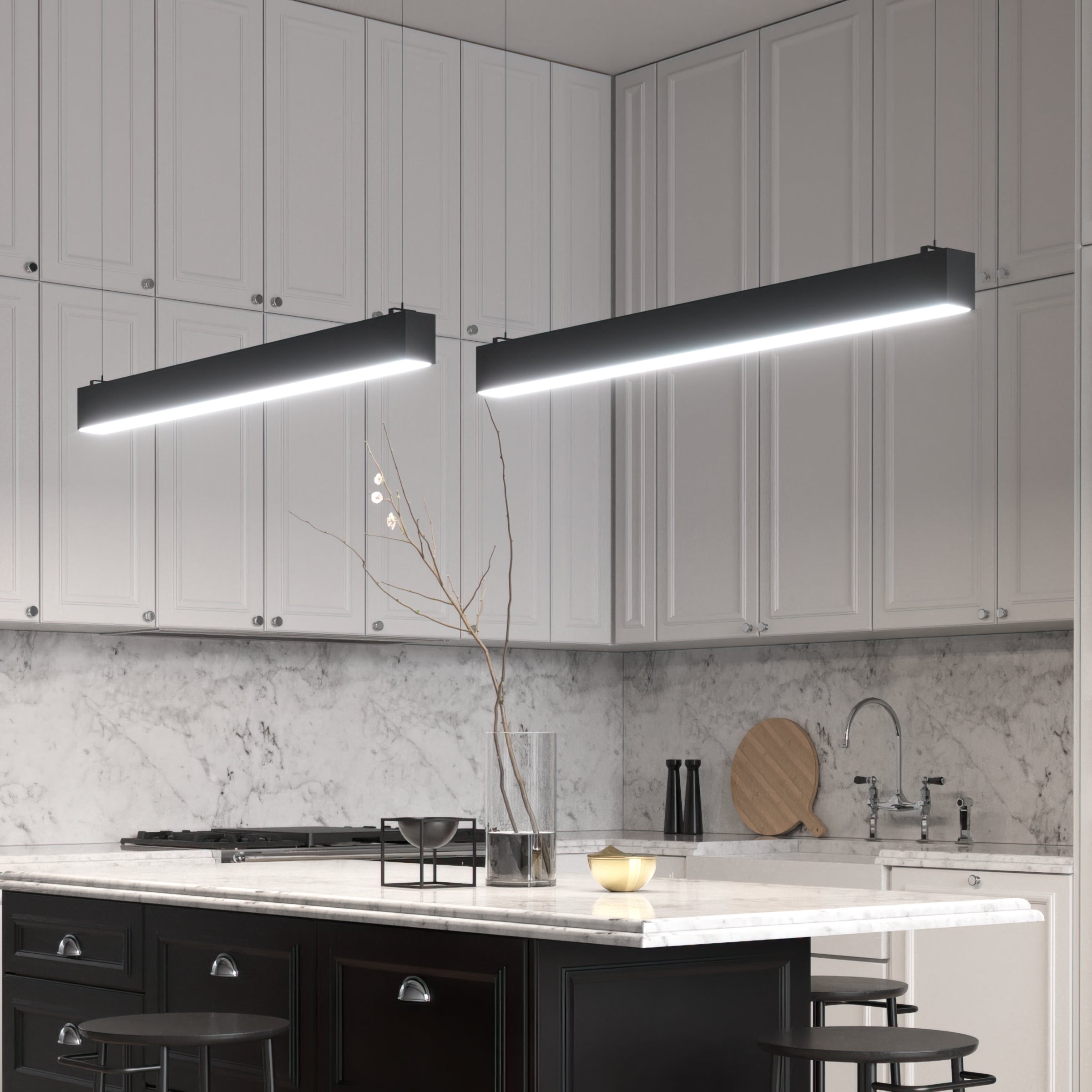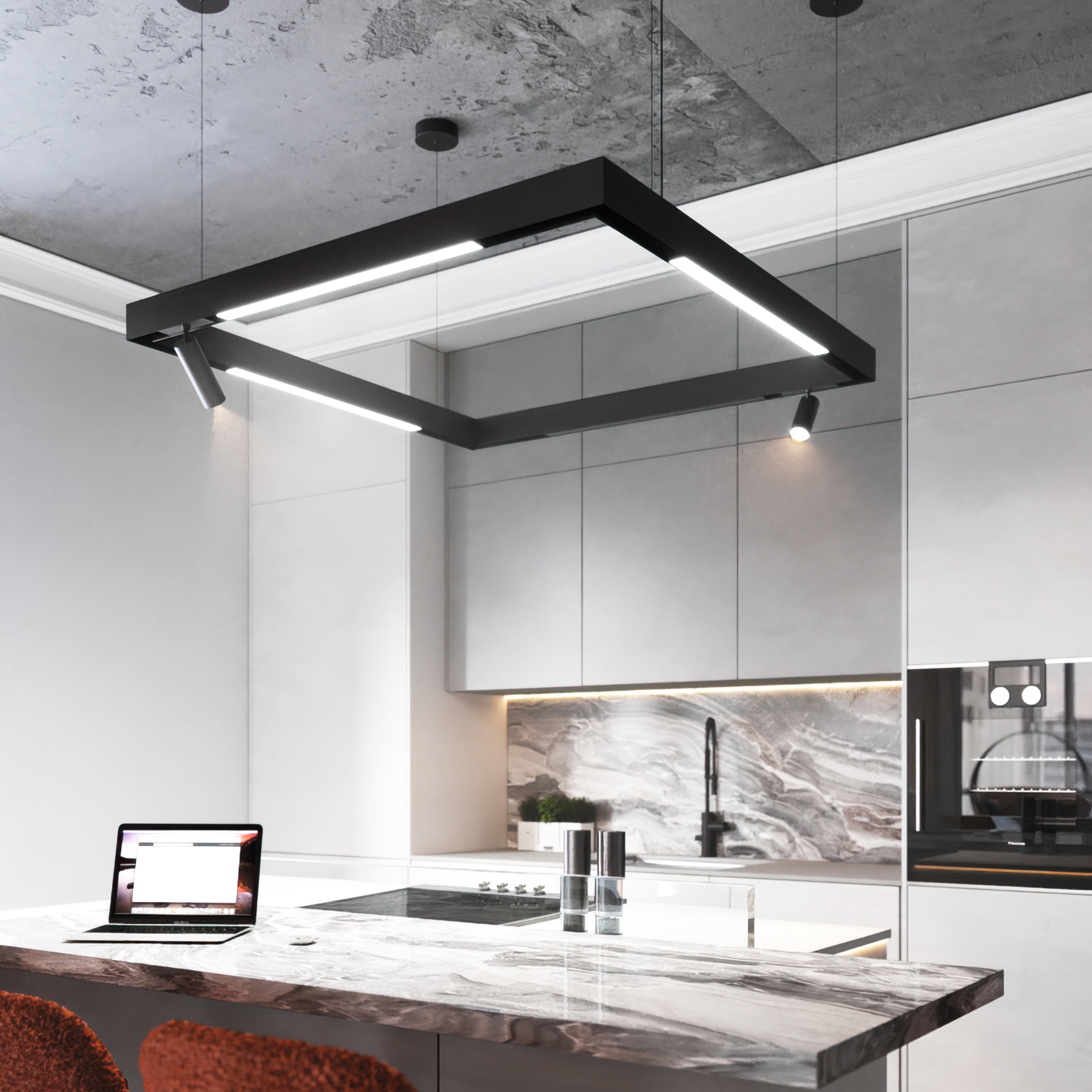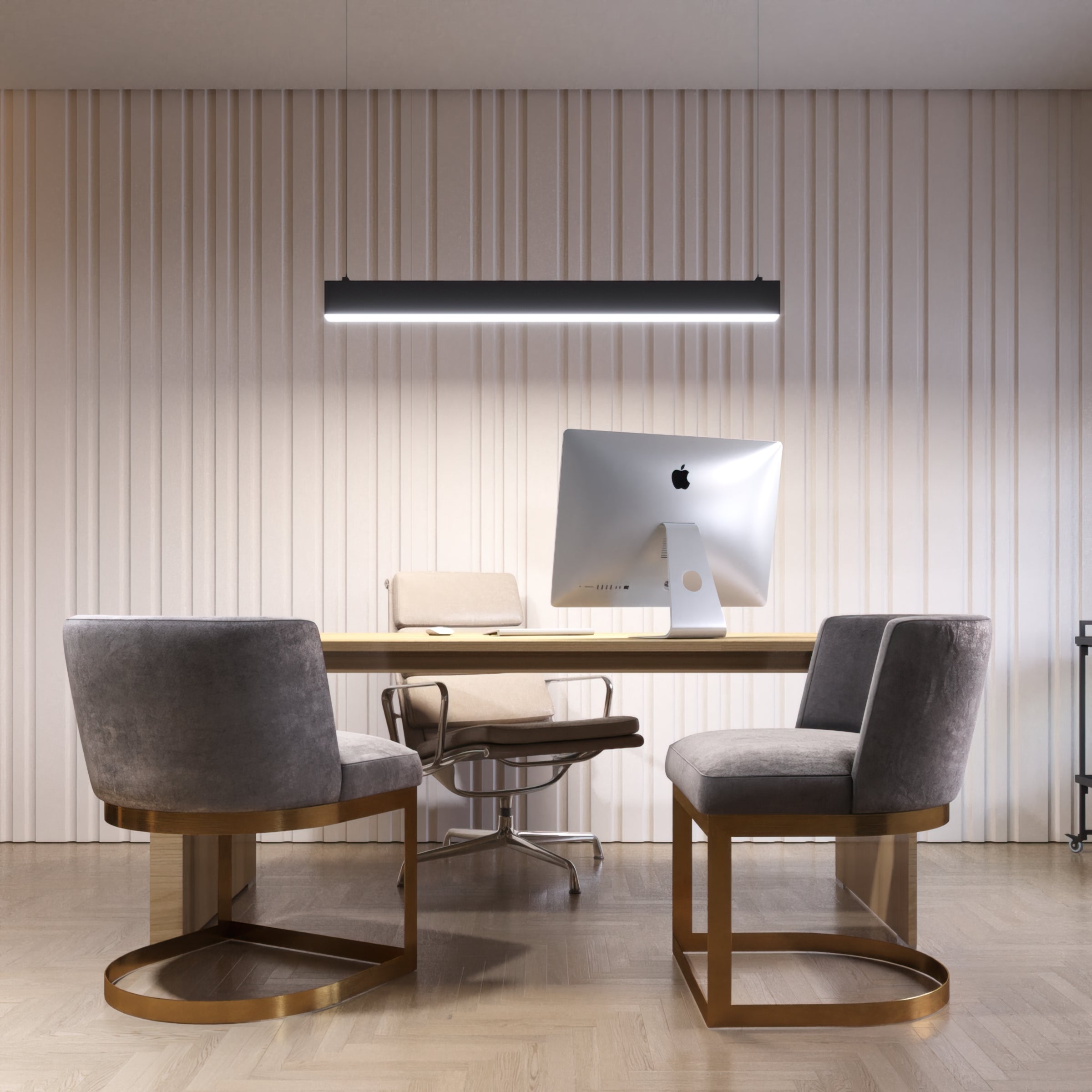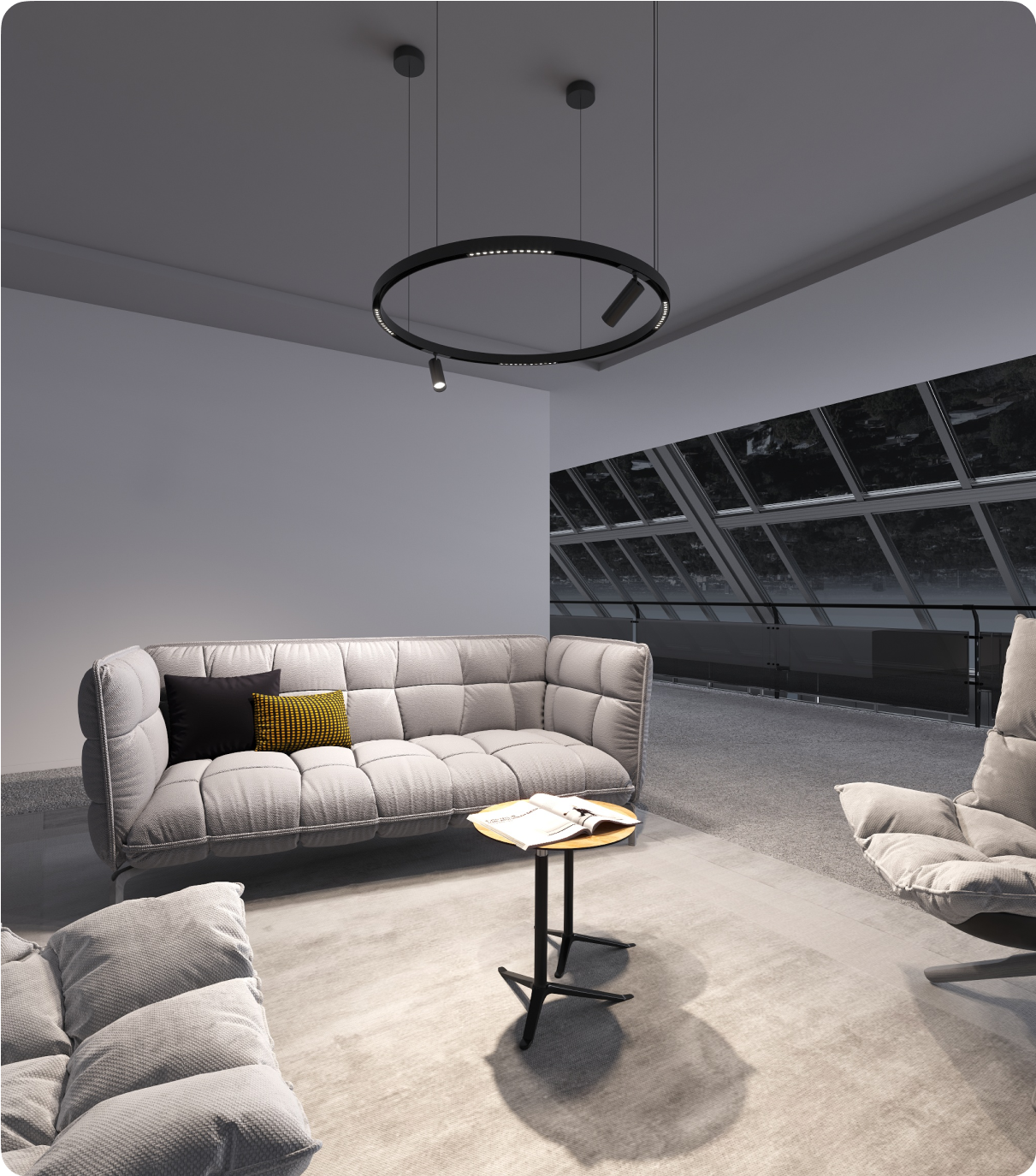Mastering the art of layered lighting is crucial when it comes to interior design, particularly in creating spaces that serve multiple purposes. This concept involves using various lighting layers to zone a space and set the desired tone. Lighting should not be underestimated, as it plays a vital role in both functionality and ambiance. Let's explore the application of layered lighting, focusing on three key layers: ambient, task, and accent lighting. We'll also analyze the impact of LED technology, which has become increasingly popular as a sustainable and flexible solution for modern interior lighting designs.

Example of using recessed LED lighting in the living room
The Challenge of Lighting Multifunctional Spaces
Our expert talks about the challenges of lighting multifunctional spaces.
Sergio Andriichenko
An expert in the design of new lighting concepts, explained how dimmable lighting is changing the approach to lighting.
Visit his Linkedin profile
Open-concept living areas like the living room or work-from-home spaces are some of the most challenging to light properly using LED light layering techniques. In my experience as an expert at LED Lights Direct, I've encountered many homeowners struggling to find the right balance in these transformable spaces. The primary challenge lies in the fact that these areas have varying lighting needs throughout the day and for different activities, making LED light layering essential for creating a versatile and functional environment.
For instance, let's imagine an open-plan kitchen, dining, and living room. When preparing food, you need enough bright light to prevent accidents and cook the food well. But it can also mean that the same space can be later transformed, for instance, for rest or for receiving guests, where the lighting has to be softer and more general. In the same way, a home office that can also be a bedroom has to have lighting that serves different purposes, such as work and sleep.
A standard error I notice often is using a single, dominant light source. This approach creates poor task lighting and creates shadows, which makes the space seem unwelcoming. Another common mistake is rigidity in lighting control, which doesn't allow users to change the lighting for different tasks and different moments of the day.
Layered lighting provides a complex solution to these problems. This paper explores how we may develop flexible lighting designs for versatile spaces through multiple light sources at varying levels and intensities. This way, it is possible to have an intense, bright light for working needs while having milder, indirect light for the living room or to create a pleasant atmosphere for a company. It means that a lighting plan should be as adaptable to the conditions of the building as the building itself.
Types of Layered Lighting and Their Roles
Layered lighting, one of the most popular interior design concepts, involves using multiple lighting elements for general and aesthetic illumination of interior spaces. The three fundamental types of lighting - ambient task and accent lighting - each serve a specific purpose in achieving lighting equilibrium. Let's explore how these various lighting types can be applied in multifunctional spaces to create a balanced and versatile environment.
Ambient Lighting
It is the basis of your lighting design; it makes the area sufficiently illuminated for everyday tasks. LED pendant and track lighting are rather beneficial for ambient lighting as they offer general illumination throughout the given area.
This paper also shows that LED fixtures are ideal for use in ambient lighting because they are dimmable. This means that LED lights are especially important in areas where there are different functions and may need different intensities of lighting.
Task Lighting
Task lighting is a general term used to describe lighting utilized to perform a specific action, for example, reading or cooking or while working on a specific job. Flexible and versatile spaces can sometimes be problematic when it comes to illumination, as the room needs different levels of light depending on what is being done in it. Electrical task lighting can be efficiently provided by adjustable LED track lights or pendant luminaires, given that they can be swiveled to produce the required illumination in specific spots.
For instance, the Lines & Spots – LED Square Magnetic Track Pendant Set is highly recommended for task lighting applications. Its adjustable spotlights are easily movable to ensure that they light up the work surfaces or the reading areas, respectively. Similarly, the Lines & Spots – LED Circle Magnetic Track Pendant Set is a set of magnetic track pendants that has a circular design for
Accent Lighting
Accent lighting refers to the use of light to emphasize certain portions of the interior design, including paintings, constructing features, or ornamental items. This type of lighting creates dimension and enhances your space's surface to enhance your room's overall look. LED pendants or spotlights used for decoration can also accent and highlight parts of the room.
As for accent lighting, when designing a multi-purpose room, you can work on creating certain zones in this space and thereby give the room a greater depth. It not only enhances the interior of the room but also helps to divide zones within the open concept of the space and corresponds with the adaptability of the room's functions.
Here is some guidance on how to select the right LED lighting for layered designs.
About the generation of successful layered lighting schemes, the use of LED luminaires has a number of benefits that are hard to ignore. Their energy conservation status, longer life span, and flexibility make them suitable for use in different areas. Here's how to select the right LED lighting for your layered design:
Energy Efficiency and Lifespan
LED lights are famous for their low energy consumption and long lifespan. These lighting systems consume much less power than conventional ones, making them cheaper and environmentally friendly. Above all, LED lights are 25 times more durable than incandescent lights, which are more efficient in the long run for your lighting design.
How to choose the right fixture for rooms in your house: Tips and Tricks
It is a requirement to know the size of the room as well as the intended use of the room when choosing the LED fixtures. In high-ceiling rooms, pendants or chandeliers can not only be used for decoration purposes but also as a source of light. For areas with low ceilings, the recommended types of lights include flush mount or semi-flush mount. Task lighting is possible through the use of adjustable LED track lights or under cabinet lights in the kitchen and working area.
What is Color Temperature and Why Should We Care?
This is where color temperature comes in when designing the environment of a room, an important consideration for any design lighting group. In the market, LED lights are available in different color temperatures, often represented in Kelvin (K). Warmer temperatures, between 2700K – 3000K, are more comfortable and suitable for living rooms and bedrooms. Cooler color temperatures (4000K-6500K) are better suited for work areas such as kitchens and home offices. Understanding these differences allows design lighting groups to create tailored environments for various spaces and functions.
Design Tips for Layering Lighting in Specific Rooms
Sergio Andriichenko says: “I have seen with my own eyes when working for LLD as a lighting expert how a well-lit area can change completely. Let's consider some real-life strategies for adding depth to lighting in various areas of your house”

Example of using accent lighting in the living room
Living Rooms
In the living rooms, there is a need to create comfort and relaxation as well as spaces for various activities. Start with general lighting by using dimmable LED ceiling lights or recessed lights. Combine this with task lighting to draw attention to the space's paintings or sculptures and architectural elements. To make the space cozier, put table or floor lamps with warm LED bulbs on the tables.
Kitchens
Task and ambient lighting are also crucial in the kitchen as well. Use LED lights under the cabinet for preparation on the countertop and adjustable LED track lighting over the work surface. For general illumination, you should use pendant lights over an island or above a dining table.
Home Offices
At home offices, there is a great need to have enough light for productivity and the right light for the eyes. A combination of general and specific lighting sources should also be used. LED desk lamps, or adjustable arm lamps, are great for particular tasks due to their ability to provide task lighting. For the best focus and alertness, use LED bulbs with a color temperature of 4000 K – 5000 K. It is also necessary to use some bulbs or lamps that can be regulated to produce low illumination during certain occasions.
Dining Areas
The dining areas, on the other hand, need layered lighting that can be used in a typical meal and other times when one is entertaining their guests. A dimmable LED pendant light or a chandelier for the table lamp offers both the general and the specific light. Add to this wall sconces or recessed lights around the walls of the room to help create dimension. This means that you are able to control the intensity of these lights to set the right mood for any meal.
Here's the key: layered lighting in multifunctional spaces is all about versatility, especially when it comes to the lighting design of office areas. Both stationary and portable lighting should be combined with the use of dimmers when possible. This approach allows you to adjust the lighting for various activities and times of day, ensuring your space is always suitable for different tasks, from focused work to casual meetings. Consider using a mix of overhead lighting, task lamps, and ambient light sources in office areas to create a flexible and productive environment.
Advantages of Using LED Lighting for Layered Lighting
LED lighting has changed the concept of layered lighting design in a big way and is far superior to traditional lighting solutions. Among the most important advantages is that LED lights are very durable. These lights are expected to have a life span of up to 50000 hours or more, thereby reducing the rate of replacement, and therefore are cheaper.
Another characteristic of LED lighting is energy efficiency. They consume less power than the incandescent or even the fluorescent bulbs. As a result, the money that could have been used for the power bills is saved. This environmental feature of LED lighting is in harmony with the general tendency of the present-day sustainable house design.
Another great advantage of LED lighting for layered designs is that dimmable and color-changing options are available. These dynamic functionalities allow the users to adjust the brightness and color temperature of the light in order to establish different ambiance, work, or time of the day. This is particularly useful in areas that could be used for many purposes because the light requirements may be different in each one.
LED Lights Direct provides a variety of LED fixtures for our customers to help them achieve efficient layered lighting by providing elegant LED fixtures. Our lighting solutions range from simple pendant lamps to highly functional track lighting systems that make any space look beautiful and functional.

Example of flush-mounted LED lighting installation in houses





